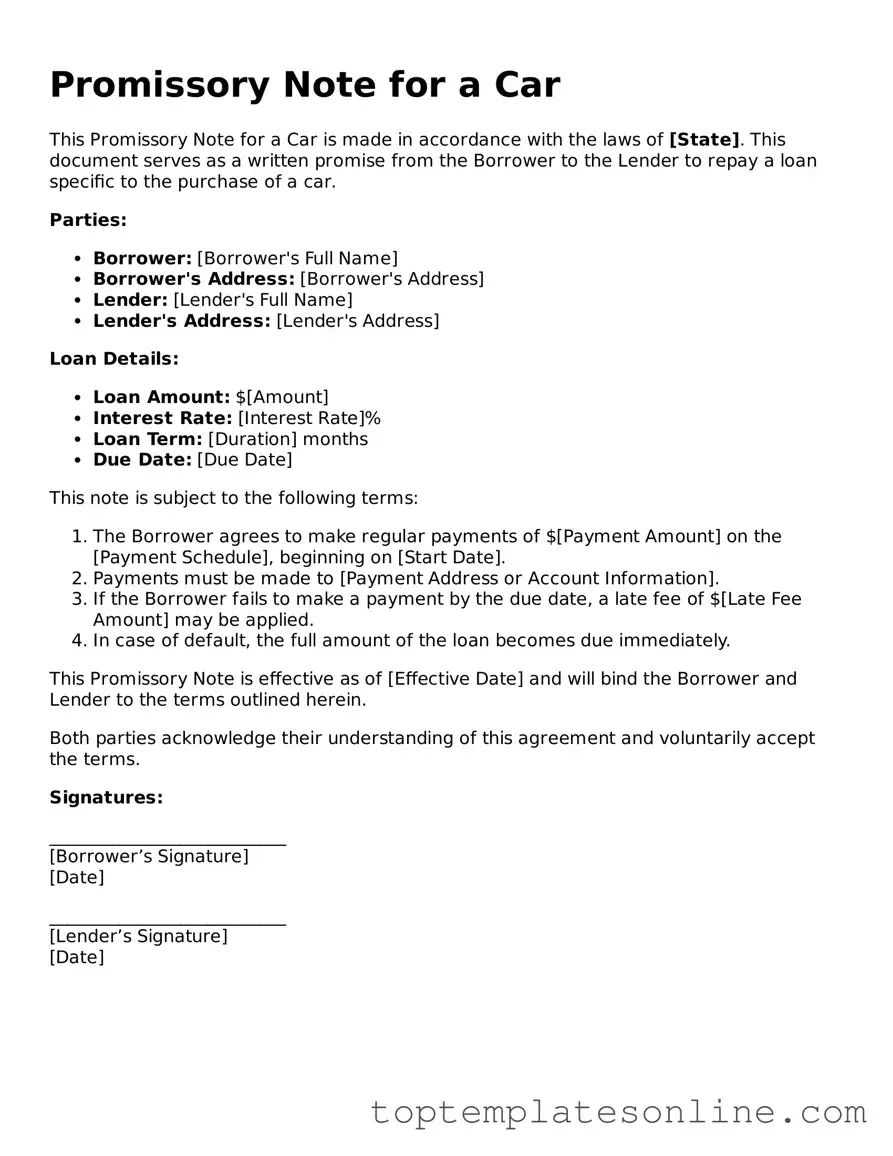Attorney-Approved Promissory Note for a Car Form
A Promissory Note for a Car is a written agreement in which one party promises to pay a specified amount to another party for the purchase of a vehicle. This document outlines the terms of the loan, including payment schedules and interest rates. Understanding this form is crucial for both buyers and sellers to ensure a smooth transaction.
Customize Promissory Note for a Car Here
